Generative AI is experiencing a boom.
While you likely recognize tools like ChatGPT or DALL-E for text and image generation, the implications for this technology are much broader. From transforming the product design process to reshaping traditional healthcare practices- generative AI is set to revolutionize nearly every industry it touches.
But as more organizations explore the potential of generative AI, we’ve been left with a few questions:
![]() Can people tell the difference between AI-generated content and content created by humans?
Can people tell the difference between AI-generated content and content created by humans? ![]() Is there a correct way for brands to approach generative AI?
Is there a correct way for brands to approach generative AI? ![]() Will consumers perceive brands differently if they choose to use generative AI?
Will consumers perceive brands differently if they choose to use generative AI? ![]() Is there an audience that is most receptive to AI generated content?
Is there an audience that is most receptive to AI generated content?
And that is precisely where our study begins.
What is Generative AI?
Before we go any further, let’s cover the basics.
For those unfamiliar, generative AI is a type of artificial intelligence that can produce various kinds of content (like text, images, audio, and video). This technology isn’t exactly new, but recent advancements in the field have made generative AI’s output convincingly authentic.
While this technology has sparked major concerns around deepfakes and cybersecurity (rightly so), it has also opened up a new world of possibilities for businesses- offering opportunities to increase efficiency, scale productivity, and reduce costs.
Generative AI: Quick Facts + Perceptions
Now, let’s dig into the data.
Unsurprisingly, we found that most people (65%) are at least somewhat familiar with the concept of generative AI. But when it comes to their feelings and perceptions, it’s a bit more complicated.
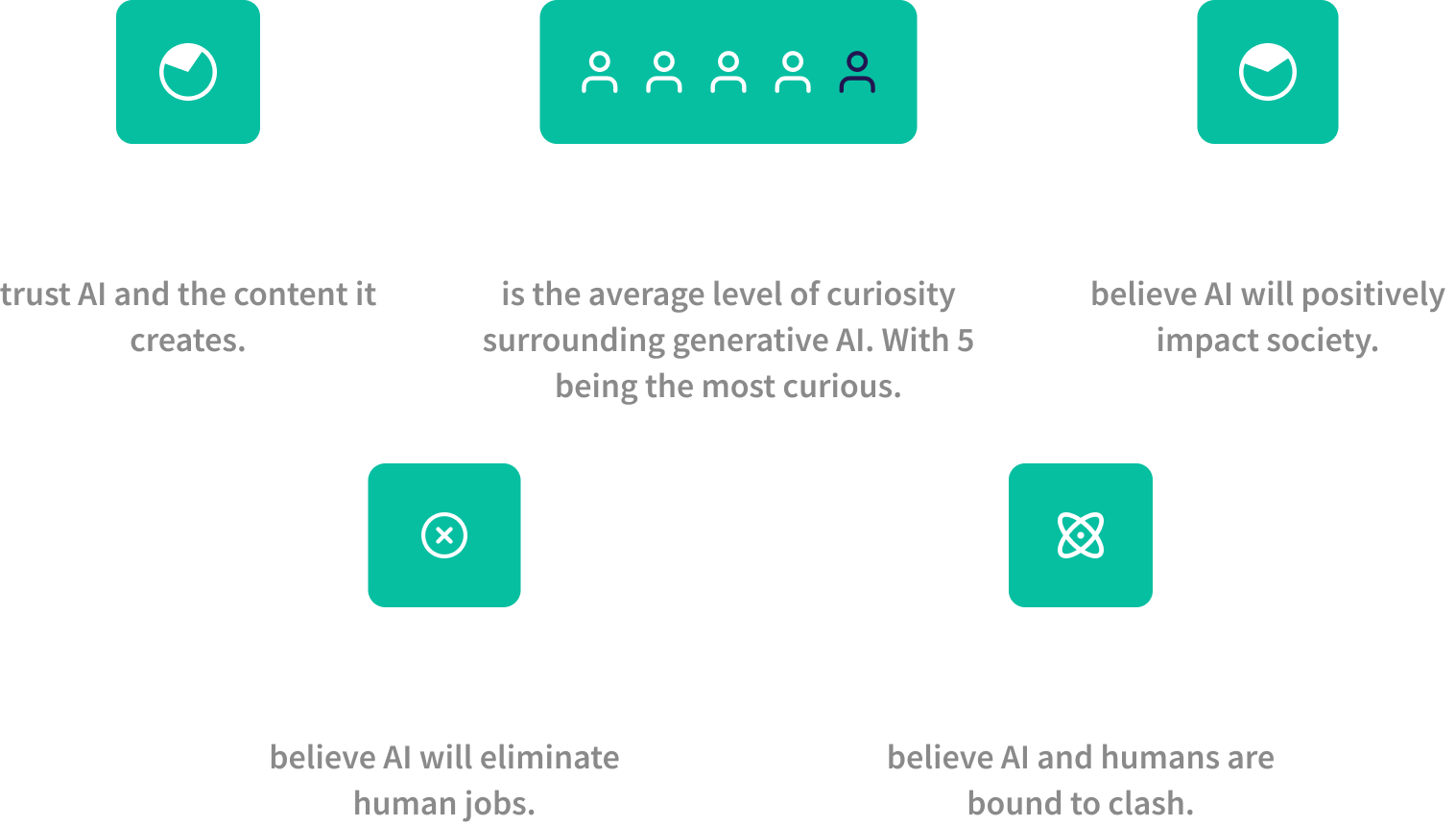
From our data, we can see that while people are curious about this technology there is a clear lack of trust and some concern. However, there is some good new for brands...
Despite the unease, 77% of respondents don’t take issue with brands using AI-generated content. Especially if they disclose it upfront.
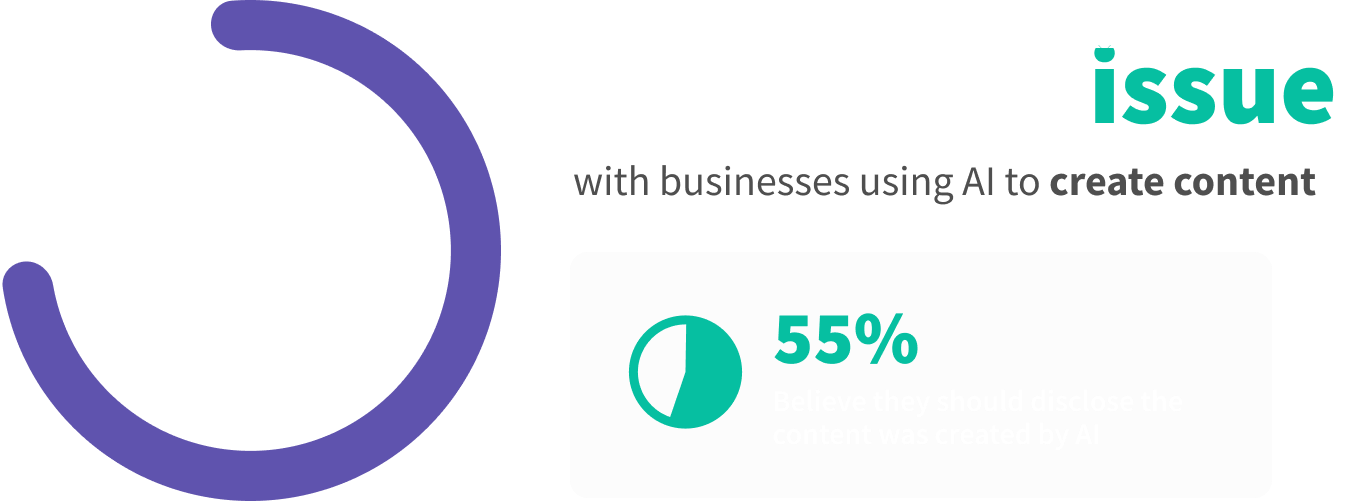
Using AI-Generated Content
Our biggest question going into this study was whether people can easily distinguish AI-generated content from that created by humans.
So we decided to put it to the (concept) test.
For this portion of the study, our team wrote a short text blurb based on a random prompt that was also given to ChatGPT. And for images, we prompted DALL-E to create something realistic and found similar stock photos to match.
The results surprised us.
Before even showing respondents the content, only 36% thought it would be obvious to discern whether it was created by AI.
And when it came to the text concept test, the numbers held. 63% were unable to tell whether the text sample they saw was created by a human or ChatGPT. Those who did wager a guess had extremely low accuracy.
When it comes to image comparison, only half of respondents were unsure whether they were looking at a real photograph or an image generated by DALL-E. And, unlike our text experiment, nearly 40% were able to correctly identify the image generated by AI.
What does that mean for businesses?
If you're considering using AI like ChatGPT to help you create content- you're likely in the clear!
Our data shows that most audiences don’t mind brands using AI generated content. Additionally, data suggests that AI generated text and images are almost indistinguishable from human generated text and images. And while people do seem to be able to discern images a bit better, this technology will only continue to improve.
The even better news? For some audience segments, using generative AI can have a positive impact on your brand image. This is especially true for younger populations.

So what does it all mean?
 Overall, only 7% of our respondents would prefer brands to avoid AI generated content. While there is a chance brands may lose some brownie points with Baby Boomers, most respondents (regardless of age) do believe brands should be able to use generative AI technology.
Overall, only 7% of our respondents would prefer brands to avoid AI generated content. While there is a chance brands may lose some brownie points with Baby Boomers, most respondents (regardless of age) do believe brands should be able to use generative AI technology.
What’s more, if your target audience is primarily made up of Gen Z, you may actually win them over- as they are more likely to see brands that use generative AI as cutting-edge or futuristic.
Brands, like those in the fashion, food services, and fitness categories should feel especially empowered to use AI.
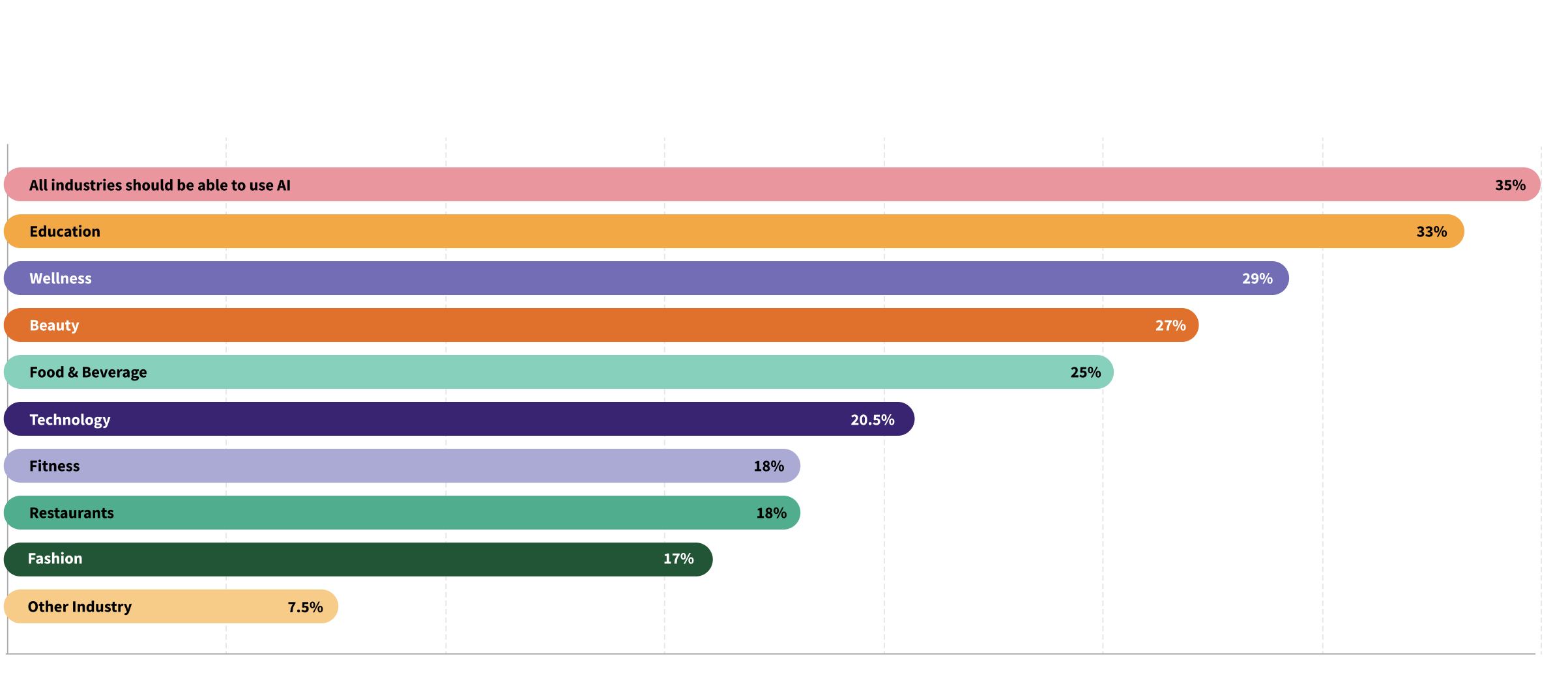
Test Your Own Content
To make this study a reality, the SightX research team developed a proprietary template that allowed us to gauge perceptions, evaluate AI tools, and test AI created content with consumers- all in a single, compact study.
And now that template is available for you!
If you’re ready to learn how your business can effectively use generative AI with your target market, reach out to our team to get started today!
What’s Next for Generative AI?
This study was just the beginning of our deep dive into the world of generative AI. If you’re interested in learning more, click the button below and let us know what you’re interested in learning about. It might just end up being a part of our new report!
